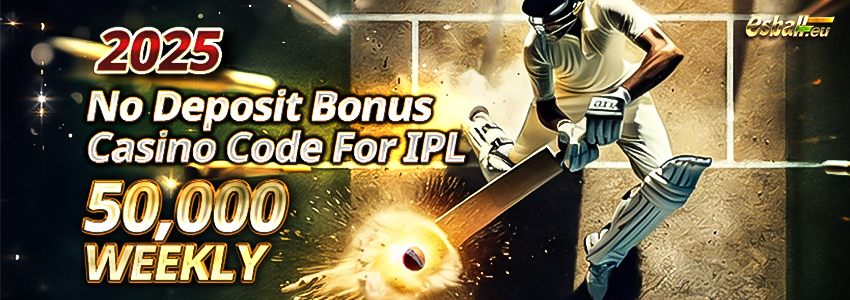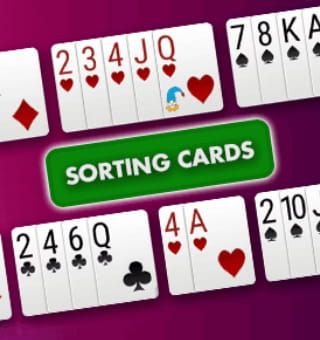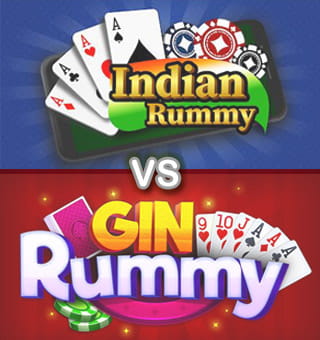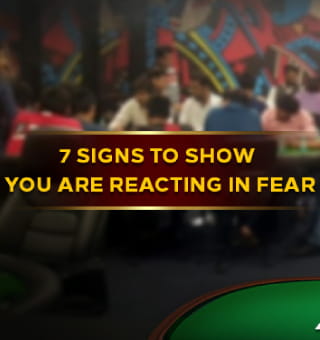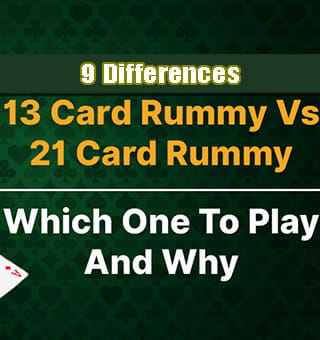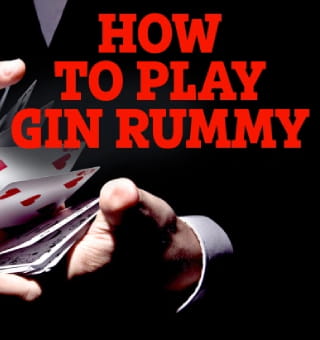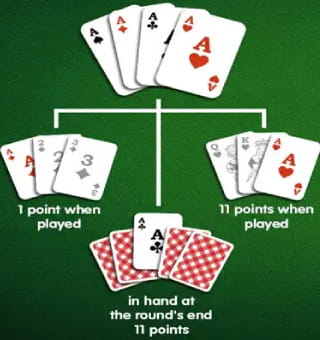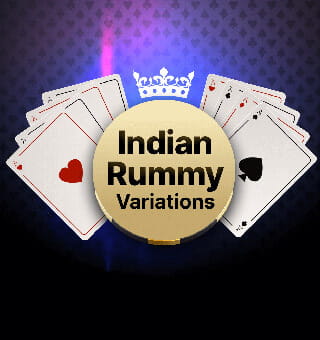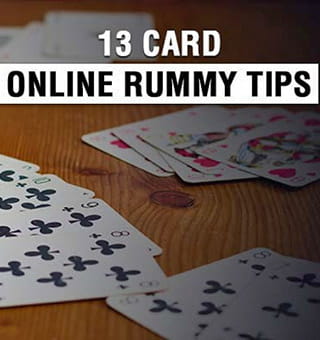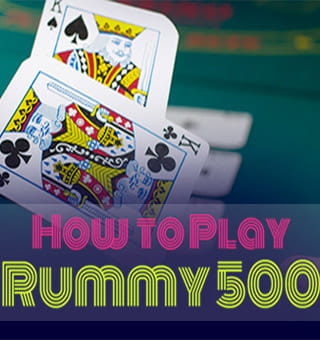
500 Rummy Rules Strategy Game Introduction
Rummy 500 (sometimes called in 500 Rum in literature, and not to be confused with Five Hundred) is a member of the Rummy family for two to eight players. Also called pinochle rummy, Michigan rummy, Persian rummy, or rummy 500, is a popular variant of rummy. The game of canasta and several other games are believed to have developed from this popular form of rummy. The distinctive feature of 500 rum is that each player scores the value of the sets or cards they meld. It may be played by 2 to 8 players, but it is best for 3 to 5.

Rummy 500 Object
The object of 500 Rummy is similar to that in most other Rummy games. This is to lay down groups or sequences of three or more cards to form point scoring melds.
Rummy 500 Rules & How to Play Rummy 500
500 Rummy is played with a standard 52 card deck plus two jokers, 54 cards in all. The game is possible for any number of players from 2 to about 8. When 5 or more people play, two decks shuffled together (108 cards) should be used.
The cards have point values as follows:
- 2, 3, 4, 5, 6, 7, 8, 9, 10 --- face value (2 for a two, 3 for a three, etc.)
- Jack, Queen, King --- 10 points each
- Ace, Joker --- 15 points each
Exception: An ace melded with the 2 and 3 of the same suit as part of a sequence meld (see below) scores 1 point instead of 15.
The Melds
As in basic rummy, a meld is a combination of cards from your hand which you place face up on the table, where it stays until the end of a hand. There are two types of combination which can be melded:
Sequence Melds
A sequence meld is three or more consecutive cards of the same suit, such as 5, 6, 7 of clubs (♣). When an ace is used in a sequence meld it can be used as either the highest card of the sequence, coming after the King or the lowest in a sequence coming before the deuce (2). Sequence melds cannot roll over. In other words, a sequence cannot be made such as Q,K,A,2,3.
Groups
A group is 3 or more cards of the same rank. These cards can be of any suit, but must all be of the same rank (such as three 4's or three Jacks).
As well as melding complete combinations, players are allowed to meld cards which extend combinations which are already on the table. This is called laying off. The fourth card of the same rank can be added to a group of three, or extra consecutive cards of the same suit can be added to a sequence at either end. For example, if heart5 heart6 heart7 is already on the board, any player on their turn can add the heart4 or heart8 or both.
Sometimes, when laying off a card, there is more than one meld it could be attached to. In this case the player laying off must choose which meld to extend. For example, if there is a sequence club7 club8 club9 and a group diamond10 heart10 spade10 on the board, and you have a club10 in your hand, you can choose whether to add your club10 to the sequence or the group, but once it is played, it cannot be moved.
Example: A has put down heart5-heart6-heart7, B has put down club9-spade9-diamond9. B can lay off the heart8 on A's sequence. C can now put down the heart9 and must announce whether it is being added to the hearts run or to C's set of nines. If C added the heart9 to the heart run, D can now extend the run further by laying down the heart10. If C had announced the heart9 as belonging to the set of nines then of course it would not be legal to lay down the heart10 as an extension of the run, which is still only 5-6-7-8.
Jokers are wild, and can stand for any card in a meld, even a duplicate of a card that has already been melded by the same or another player. A player melding a joker must make it clear which rank it represents, and this cannot subsequently be changed. For example, you might meld club6 club7 joker as a sequence, and by putting the cards down in this arrangement you are specifying that the joker represents the club8. Later someone may lay off the club5 or club9 on this sequence, but they are not allowed to change the joker to a club5 so as to lay off a club4.
If you were to meld diamond9 and two jokers you would have to state whether it was meant to be a group of nines or a sequence. If it was a sequence, you would have to choose whether the sequence was 7-8-9, 8-9-10 or 9-10-J. On the other hand, if it was a group, you would not need to specify the suits represented by the jokers. Any player could subsequently lay off a different nine, completing a group of four nines.
Note that a joker does have to represent some specific card. It is therefore not possible to meld a group of (for example) four kings and a joker, because there is no fifth king that the joker could represent. Even if you are playing with two packs, it is a rule that the cards of a group must all be of different suits, so there is no fifth king that can legally be included in the meld.
The Deal
When there are more than two players dealer deals the cards one at a time, clockwise, starting with the person to dealer's left, until everyone has seven cards. In a two-player game the dealer deals thirteen cards to each player. The remaining cards form the stock pile; they are placed face down in a position accessible to every player. The top card of the stock is flipped over and placed face up alongside it. This is the first card of the discard pile. The players look at their cards, and may organize the cards in their hand according to suit or number.
The Play
The person on the dealer's left begins. The turn to play passes clockwise. A turn consists of three parts:
The Draw
You must either draw the top card from the stock, and put it in your hand without showing it to the other players, or draw one or more cards from the discard pile. It is always legal to draw the top card from the stock or the top card from the discard pile (but see the variations below). You may take a card from lower down in the discard pile only provided that:
- you immediately meld the card - either in a new combination or by laying it off on an existing meld.
- you also take all the cards above (i.e. discarded since) the card you meld.
Melding
If you wish, you may meld any valid combinations in your hand by placing them face up in front of you. You may also lay off cards on your own or other players' existing melds. As all melded cards score for the player who melded them, when laying off a card on another player's meld, you place the card in front of yourself, rather than alongside the existing meld.
The Discard
Unless you managed to meld all the cards in your hand, you must discard one card from your hand face up on top of the discard pile. If you drew just the top card of the discard pile you must discard a different card. However, if you drew more than one card from the discard pile, then after melding, you may discard again the card that was previously on top of the pile. The cards on the discard pile are overlapped, so that previous discards can be identified.
The play continues until one of the following things happens:
- A player has no cards left in hand. This can happen either when a player melds all their cards or when they meld all but one and then discard their last card.
- There are no cards left in the stock, and the person whose turn it is does not wish to draw from the discard pile.
- As soon as either of these conditions is reached, the play ends and the hand is scored.
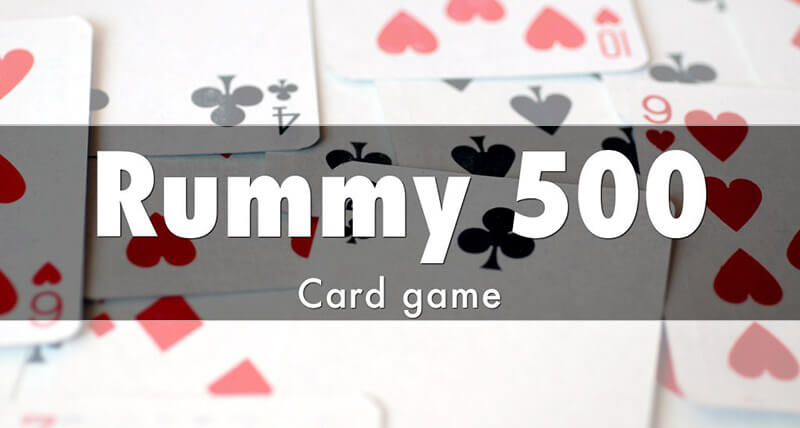
Rummy 500 Scoring
When someone has no more cards left in their hand, or there are no cards in the stock when someone wants to draw from it, the game is over. All the players count the total value of the cards they have melded, and subtract the value of the cards they have left in their hands. Each player's result is added to their cumulative score.
Note that as soon as the play ends, no further cards can be melded. Any cards that players still have in their hands count against them, even if these cards could have been melded.
If the cards left in your hand total more than the cards you have melded, your score for that hand is negative. It is also possible for your cumulative score to be negative - for example if you make a negative score on the first hand.
Further hands are played until one or more players' scores exceed 500. At this point the session ends and the player with the highest score wins. In the event of a tie, further hands are played until there is a single winner.
Rummy 500 Additional Rules
There are some additional, optional rules that you may like to use. Be sure to discuss these rules and accept or reject them before you begin game play.
- 30 points rule: This rule states that players must earn at least 30 points in one round before they are able to add points to their overall score. Once players are on “on the board,” any point value can count.
- Boathouse rule: This rule states that players must discard on every turn, including the one in which they “go out.”
- Stock pile re-fill rule: In standard Rummy 500, when the stock pile runs out of cards, the round ends. However, some players instead choose to reshuffle the stock pile and continue playing until one player goes out.
- Rummy rule: This rule states that any time a player discards a card that could meld with an existing set on the table, the first player to call out “Rummy” gets to take that card and lay it in front of them (earning that card’s score).
Rummy 500 Basic Strategy
Success in Rummy depends largely on keeping track of the discards. From this you’ll know which of your own combinations are still “alive” and you’ll be able to guess which combinations your opponent is holding. Pay attention to sequences when considering what cards to draw or discard. For example, it is easy to miss an ace-low sequence (A-2-3 or A-2-3-4), because the ace is always sorted as a high card in your hand.
Later in the game, intimidate your opponent—keep a vigilant eye on your opponent’s score, and try to keep your score slightly ahead to keep him or her from ending the game. Also watch your opponent’s hand size at the end of the game: you don’t want to be surprised by the other player going out when you have a full hand of cards (especially high ones) near the end.
Know when to lose gracefully. If you’re dramatically behind on points in the current hand, but you can go out, consider going out early even if this means losing; since you’re playing several games to 500 points, think long term. Prolonging the hand when you’re losing and your outlook is bad gives your opponent a chance to make the outcome even worse for you.
Your ace strategy should vary throughout the game. Early in the game, it is worth holding onto aces, since the potential 15 points you could score (for a set or ace-high sequence) are very valuable. Near the end of the hand, discard aces that are not sure things. At 15 points a pop, it is too much of a risk to hold onto them near the end of the hand.
If your opponent’s score is nearing 500, try to end the hand at an appropriate time, if you can. Don’t be afraid to go out early if you don’t have a fantastic hand and your opponent won’t win the game. Maybe the next hand will be the monster hand you need to mount your comeback.
? Claim 2025 IPL Free Casino Bonus Now ?
Click the picture to unlock the promotion and receive your exclusive IPL Esball Casino Code Bonus No Deposit!
Don't miss out on your chance to claim up to 50,000 for FREE! Only valid from 4/21! ⏳
Rummy Strategy

